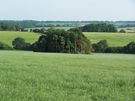Where to invest in farmland
Andrew Shirley advises on where are the best investments when buying land overseas


Another investment prospectus promising double-digit no, wait, it's triple digit growth lands in my inbox. In only five years, I'm assured, my capital will appreciate by more than 400% and all I need to invest is a few thousand pounds. The opportunity that seems to be good to be true is farmland in the Ukraine, a country the fund describes as the ‘breadbasket of Europe'. But, following an IMF credit-crunch bailout, the mean-spirited might call it the basket case of Europe.
However, the arguments are compelling: an increasing global population will need more food, that food has to come from somewhere, and that somewhere could well be the Ukraine, where the price of top-quality arable soil is far lower than in other countries. Land values are projected to rise from an initial investment of $1,500/ha (£930) to $5,000/ha (£3,000) within five years.
When I run the numbers by Brown & Co's Adam Oliver, who's based in Poland and knows the Ukraine well, I'm not sure if he's laughing or crying. He confirms what I suspected: the figures are very inflated. For anybody brave enough to invest in the Ukraine where you can't buy land, but purchase the right to lease it, it can now be acquired from practically nothing to £124/ha. Last year, before the collapse of Lehman's, international funds were paying up to $1,000/ha (£620) to acquire those lease rights. Unfortunately, many of them were short-term speculators and never intended to farm the land or didn't have the capital to do so. Now, they're forced sellers. People don't realise that land acquisition only accounts for about 35% of the cash required to farm in the Ukraine, explains Mr Oliver.
But this doesn't mean that Ukrainian farmland should be completely off a potential investor's radar; in the medium term, there could be some exciting opportunities, as the downside is next to nothing with leasing rights so low. What it does show is that farmland can be just as volatile as other investments, especially in markets where fickle investors are the main players. In other investor-driven markets, such as Russia, prices have also fallen substantially. Farmland there under cultivation can now be bought for just £124-£310/ha.
South America has also had a lot of interest from investors again, because large acreages are available cheaply. As an investment target, Brazil has the edge over Argentina because it's more politically and economically stable. Much of Argentina's best cropping land is also already quite fully priced. Despite the talk, however, average land prices in Brazil have increased by only about 2% this year, and now stand at 4,446 Reais per ha (£1,460). Talking to Stuart Donald of Agrifrontiers, which evaluates land for potential buyers, it turns out very few actual deals have happened since the credit crunch, but the number of enquiries from overseas has increased sharply. He reckons land prices could start to reflect this soon.
Land values vary massively across Brazil, ranging from less than R500/ha (£165) for undeveloped forest to more than R20,000 (£6,569) for double-cropping arable land. Increasing the value of cheap forested land by clearing and improving it has been a much touted investment route, but relatively few foreigners have actually done it, says Mr Donald. The controversy attached to cutting down trees puts off many, although this type of land could prove popular as a Green investment that would generate carbon credits by preserving the rainforest.
Security of tenure is reliable in Brazil, but it's vital to ensure the seller has legal title of the land. Land values are also driven by commodity prices in some areas, land is priced in bags of soya beans so will reflect the increasing volatility of world markets. This means predicting the future income from farmland is difficult, especially over the short term. Falls in commodity prices, which, in some cases, have more than halved since their peak in the first half of 2008, have already had an impact on land values in the US and New Zealand.
Sign up for the Country Life Newsletter
Exquisite houses, the beauty of Nature, and how to get the most from your life, straight to your inbox.
According to the latest figures from the United States Department of Agriculture, average arable values in the country's corn-belt states fell by 4% last year to $9,562/ha (£5,900). This was the first fall since 1987, and followed a 14% increase in values the previous year. Much of this boom was based on the increase in the value of maize-derived bio-ethanol. The sharp drop in oil prices has hit ethanol and, subsequently, maize prices hard.
The decline in the value of dairy commodities has had a big impact in New Zealand, where they account for more than a quarter of the country's exports. The most recent official statistics show that dairy land fell 5.7% during the second half of 2008 to NZ$35,000/ha (£14,600). Figures from the Real Estate Institute suggest this trend has continued into 2009, with values dropping by as much as a quarter in the 12 months to June.
Some of the countries, such as Zambia, targeted by land-hungry states can't currently feed themselves, which leads to questions about the long-term sustainability of the welter of deals that have apparently been struck will citizens permit those overseas to benefit from their land while they go hungry? This is an argument put forward by those who advocate investing in Canada or Australia, noting that these countries offer the best of both worlds cheap land coupled with transparency and stability. Canadian arable land is much cheaper than that in the UK. In the key grain-producing prairie provinces, it averages C$2,100/ha (£1,175) after increasing 10% in 2008, although gains have been more mooted this year. Ownership issues partly explain the disparity in Saskatchewan, where land is less than C$1,500/ha (£840), non-Canadians aren't allowed to own farmland. These restrictions are gradually being relaxed until recently you had to be from the province, but access is currently only available through certain investment funds.
No such hurdles exist in Australia, and, if you're looking for big acres and big investments, this is the place to go. An estate agent I spoke to recently said he was marketing a 250,000-acre portfolio of quality arable and pastureland with a potential unleveraged annual return of up to 9% but with a price tag of close to A$1bn (£500m).
Calculating average values for Australian land is extremely difficult, and pastureland is usually priced on the basis of how much stock it can support rather than physical area. In the Northern Territories, this could be only A$1,150 (£575) for one cow unit, while in New South Wales it might be as high as A$7,000. Good cereal land in a reliable rainfall area would be worth about A$5,000/ha (£2,500).
Around the world, there are clearly some good investment opportunities, and with most farmland markets subdued or falling, now could be the time to make a move before they bounce back. The more canny investor, however, will need to decide where to buy based on something rather more substantial than the extravagant promises of a property fund.
Andrew Shirley is head of rural property research at Knight Frank. This article was first published in ‘Farmer's Weekly'
Country Life is unlike any other magazine: the only glossy weekly on the newsstand and the only magazine that has been guest-edited by HRH The King not once, but twice. It is a celebration of modern rural life and all its diverse joys and pleasures — that was first published in Queen Victoria's Diamond Jubilee year. Our eclectic mixture of witty and informative content — from the most up-to-date property news and commentary and a coveted glimpse inside some of the UK's best houses and gardens, to gardening, the arts and interior design, written by experts in their field — still cannot be found in print or online, anywhere else.
-
 A crenellated folly, seven bedrooms and 20 acres in the glorious Welsh landscape
A crenellated folly, seven bedrooms and 20 acres in the glorious Welsh landscapePenybont Hall in Powys is a generous family home with plenty of good sense and foolishness.
By James Fisher Published
-
 How much did Stonehenge cost when it last came up for sale? Country Life Quiz of the Day
How much did Stonehenge cost when it last came up for sale? Country Life Quiz of the DayFriday's Quiz of the Day
By Toby Keel Published
